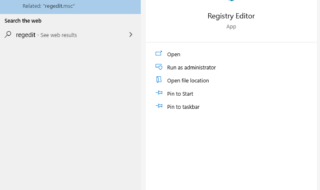Environmental data analysis allows scientists to determine the effects of different environmental influencers. From pollution to overpopulation, everything humans introduce to the environment seems to have a strong impact.
By analyzing the data, scientists can draw conclusions and suggest improvements. Here are five tips on how to analyze environmental data.

Have a question
Even before you begin to collect data, you need to have a scientific question in mind. The right question will determine what kind of data you need to collect and how you need to go about collecting it.
Having a clearly defined scientific question also keeps your data analysis focused, ensuring you don’t waste time on other information your data might present to you.
Keeping other information aside for later study is acceptable, but your scientific question should guide your initial data analysis completely. Your question might change as you make discoveries, but the initial scientific question is the main determiner in the type and amount of data you receive.
To enlighten more on yourself on environmental topics and expand your knowledge further, you must visit https://gradesfixer.com/free-essay-examples/environment/. The site will also greatly help when you need to work on an environment essay.
Make sure your measurements are clear
Your scientific question has already established what data and how much needs to be collected. You now need to establish a measurement priority. Your measurements are determined by a number of factors.
When choosing how to measure your data, you need to think about your time frame, the unit of measurement, and what factors can influence results.
Environmental data is usually measured over an extended time frame. However, there are times when it can be measured over shorter periods. By choosing what you aim to measure and how long the study should take, you can determine whether your time frame is sufficient.

Clean the data
Before you can analyze the data completely, you need to clean it up. Remove anything that is irrelevant, and find out what can be done about outliers and missing data points. Missing data can throw off your results completely, so you might feel compelled to run the experiment for a few more days to replace missing data.
In cleaning your data, consider what factors may have resulted in outliers or missing data and think of ways to address these in your report. You cannot just ignore data, but finding a reasonable explanation can make it more scientifically acceptable.
Organize data
Organizing your data makes it easier to sort through. Arranging it in alphabetical order, size order, or by days of the week allows you to see patterns more easily. Organized data also makes it easier for the layperson to understand even before it is compiled into a basic table or graph.
When organizing your data, make sure the tool you choose is relevant to the information you collect. Arranging in alphabetical order only works if the data has some sort of alphabetical significance.
Present the data
Data presentation is the most important part of the entire data analysis process. Presenting the data in clear, easy-to-understand charts is one of the most important ways to convey a message. While you might be presenting your data to a team of fellow scientists, it is likely that your results will be published in a public-access library.
The average person should be able to understand the data and what it means without much issue. You should also ensure that the data is presented accurately and without skewed scales aimed at exaggerating results.
Conclusion
Analyzing environmental data is important for understanding the environment. When you analyze the data, be sure that the data is accurate and well-organized. You should also present it accurately so that the average person can easily understand what the data shows and what it means.
Author Bio:
Elizabeth Skinner is an online tutor who teaches college students from various parts of the world. She also works as a freelance academic assignment writer and covers arts subjects, including geography, philosophy, sociology and history. In her free time, she watches sci-fi movies, plays basketball and goes out fishing.



